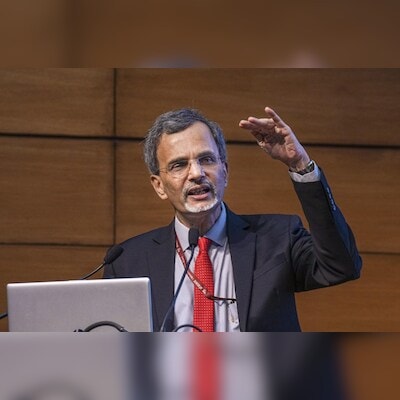[ad_1]
Chief Economic Advisor (CEA) V Anantha Nageswaran on Monday said that he was upbeat but cautious about the growth prospects of India while projecting a 6.5-7 per cent gross domestic product (GDP) growth rate for 2024-25. The CEA, while addressing a press conference, called for policy interventions in the agriculture sector, bridging the job and skill gap, among other things.
GDP growth projection of 6.5-7%: Conservative?
We are not pessimistic. We are very optimistic about growth but also mindful of the challenges, which I listed, including the way the monsoon has progressed.
In January, we were more confident about 7 per cent. Since then, the global environment has become even more polarised, and financial market valuations are much more elevated. We feel 7 per cent is doable, yet we want to be, not necessarily cautious, but somewhat prudent in projecting. We would rather be pleasantly surprised than be forced to face disappointments.
What brought us from $8 to $2,500 (per capita income) in the past 30 years when the world was very different will not be what takes us from $2,500 to $10,000. This awareness is what we try to convey in the Economic Survey.
Agriculture, a growth driver
With the way global growth and trade are evolving and the kind of protectionism that is becoming rife, agriculture still carries a huge potential for driving growth. If only we can make sure the incentives are aligned, allied services in agriculture are encouraged, and land consolidation happens in a big way because more than 85 per cent of land is 2 hectares or less.
Even in average yield, there is a gulf, and if we can bridge this gulf, we not only ensure domestic food security but can also become a very important global exporter of food, which also gives us strategic advantages.
Job creation and skilling
India needs to create about 8 million jobs annually until 2030 in the non-farm sector. What is heartening for skilling is that earlier we were worried about enrolment in higher education in India. The aspirations have shifted. It is about learning outcomes.
The number of activities restricted for women in different states totals 139. When we talk about boosting female labour force participation, some of these are in the realm of states. The proportion of people who took the employability test and passed was one-third and is now more than one-half. The task ahead is still quite large, with a little under half not considered employable. But progress is important to take note of.
Using taxation to reduce inequality
We have a progressive rate of taxes in both direct and indirect taxes. Ultimately, it also has implications for how we tax income, including income from labour and how we tax income from capital, etc. Those are the underlying angles behind that question.
Impact of artificial intelligence
The impact of artificial intelligence (AI) is still not very well understood across the world. We need to ensure that as we deploy AI, we also prepare the population to be able to participate in it by redesigning the curriculum and creating in-house courses to make them AI-compatible and AI-employable.
While the global capability centre-kind of jobs may not be very easily affected in the near term, some of the business process outsourcing jobs may be affected. So, India may experience a slight short-term negative impact followed by a medium-term positive impact.
Concerns of over-financialisation
When the pace of financialisation of the economy or financial innovations in the capital markets is running faster than economic development — and the Asian financial crisis is a classic example of that — usually, it runs into trouble. So, the introduction of derivatives products and single-stock futures are all things that, for a country of this per capita income size, are very good financial innovations but probably a little bit too early from the point of view of what it means for the underlying savings habits and channelling those savings into capital formation.
Response to green bonds
The greenium issue is not peculiar to India. It plagues all green bond issuances across the world. It is not that something is lacking in India’s offering. We have a very high green rating. It is about the private capital across the world and India walking the talk that ‘we are interested in green projects’. It is not that India is missing something.
First Published: Jul 22 2024 | 11:03 PM IS
[ad_2]
Source link

